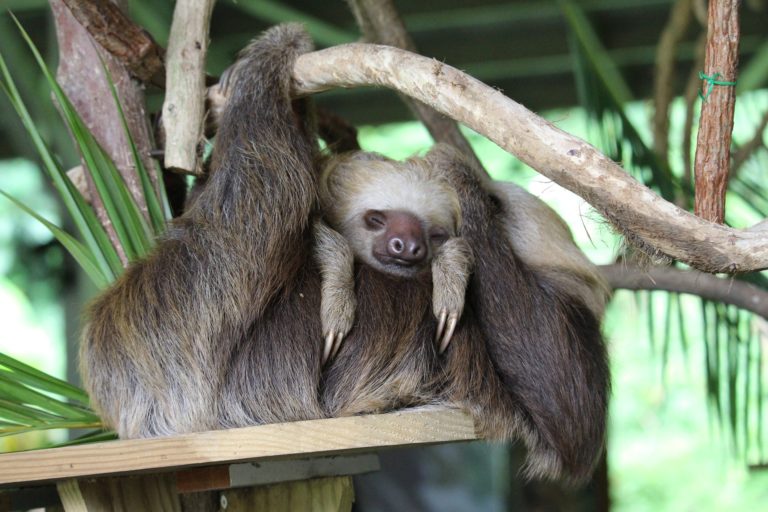Sloths can reach a grand old age even outside of their natural habitat when they receive the care and attention they need. In a bid to extend the lives of older, ailing sloths, the Welsh Folly Farm opted to care for these quirky, ageing slow-pokes.

A snoozing sloth. Image credit: Pixabay.
‘Instead of taking on young breeding pairs, we have made the decision to home older sloths which have “retired” from other zoos, giving them a comfortable home tailored to their needs as they relax into their twilight years,’ the zoo announces on its website.
Two-toed sloths, the kind that Folly Farm are taking on, have an average lifespan of 20 years in the wild, but this can be extended by 30 years for sloths who are cared for in captivity.
Folly Farm zoo curator Tim Morphew believes that conservation is paramount and that older animals are equally important. ‘With the older sloths, we might boil their root vegetables to make them softer and easier to eat and, if they’re showing signs of old age, add supplements like cod liver oil into their diet,’ he says.
The zoo also monitors and tailors the sloths’ enclosure to accommodate the different needs of these less sprightly sloths.
Aged 24 years, Tuppee was the Folly Farm’s resident grumpy old man until he received a new neighbour late last year. Lightcap is a 34 year-old female sloth who recently moved in, and the tenants are pleased that Tuppee, who has been with them since 2016, will now have a friend at the zoo.
‘Sloths aren’t known for being social animals, but as they get older we’ve found they do like company. So, we’re all looking forward to getting to know Lightcap and seeing how the pair get on,’ Morphew says.
Fun facts about sloths:
– Sloths are known to sleep between 15-20 hours a day, which results in their sluggish metabolisms.
– The more tree branches there are to hang from, the merrier, and sloths prefer a forested habitat – mostly in Central and South America.
– Because sloths spend a lot of their time hanging upside-down from tree branches, their hair actually parts and grows ‘downwards’ towards their backs, leaving their tummies relatively smooth.
– The ‘grooves’ in their hair allow for green algae to grow, resulting in sloths having a natural forest-coloured camouflage.
– While they are slow movers, sloths’ strong arms make them strong swimmers, and they will indulge in a shallow paddle from time to time.
– Apart from their strong arms, these creatures also have very strong, long claws which help them cling to branches with ease.
Featured image: Pixabay

















